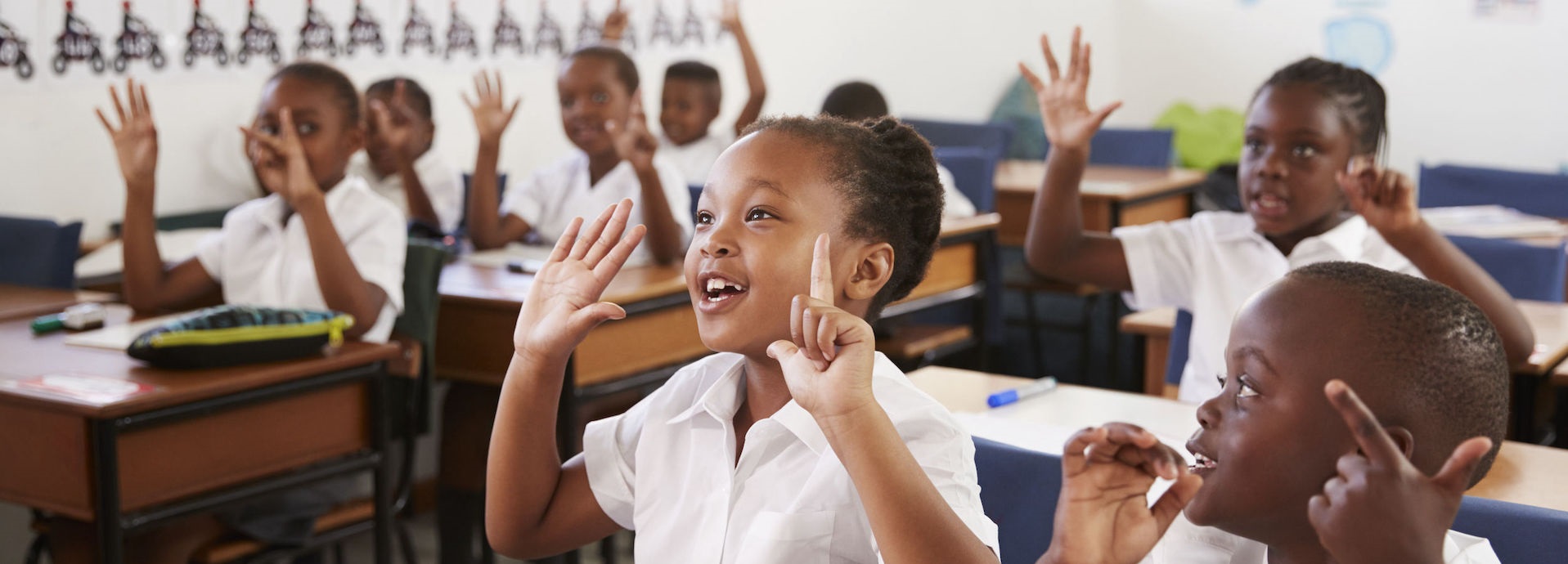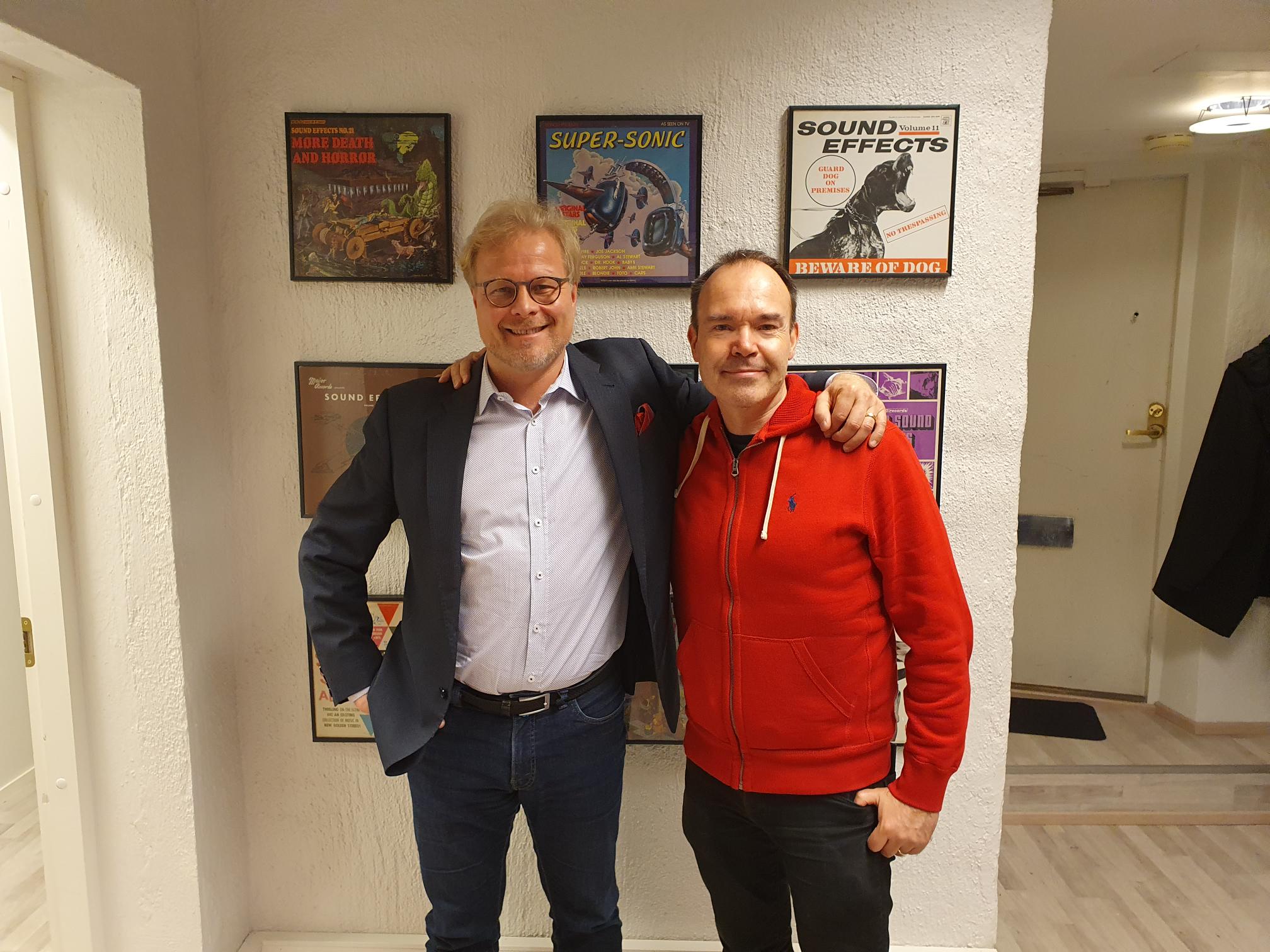
Podcasts

Lack of access to proper education is clearly a major challenge for humanity with an estimated 260 million children and youth globally unable to attend school. How do we help close the gap? Joining me today to discuss the issue are Sampson Adotey from the Bertha Centre for Social Innovation & Entrepreneurship, Cape Town and Peter Vesterbacka, principal advisor of the Ambitious Africa education project.
Peter, UNESCO's World inequality database on education highlights wealth, gender, ethnicity, and location as key factors that shape people's opportunities for education. Which component do you believe holds the most influence and why?
Peter: If I consider Finland, which is reputed to have one of the best educational systems in the world, I will start by saying the location is key. When we talk about education, you should have, you know, the school like next door, and you can walk or ride your bike or something like that. Then, of course, you can look at wealth, and how much you are investing into education and all that. But I think that, again, the answer is more complex than being simply about wealth, or location. I think that we must have a starting goal that we need to educate, not just a few, but all.
And Sampson, how about the African perspective? Could you elaborate a bit on the scale of the problem there?
Sampson: As it stands, if you looked at the statistics from UNESCO, we have more than 250 million young people being out of school. And this is quite staggering. In the continent of Africa, our youth presents a unique opportunity. And there's the need for us to really harness that demographic for the future of Africa. Now, when you talk about the issue of access, we have multiple layers. You must look at access in terms of technology and infrastructure, in terms of teachers, in terms of pedagogy and textbooks and many other things. Now, when you consider this from a regional basis, we have middle-income countries, we have countries in different stages of development, and how much they spend on investment in education differs, according to their GDP. So, I would say that the issue of access is quite a big problem. And it is one that needs a sort of systemic approach in addressing it.
What about gender equality, and the issue of girls being left out of educational systems? How can we truly turn the trend here?
Peter: I think that we need to lead by example. We need role models and really show that it has a big impact on society. It starts with education, educating all and not just a few, and of course, both genders. And I think that then, goes through all the way to work and other aspects of life.
Sampson: We need to really understand what the barriers to access are for young girls. Currently, 30% of primary school-aged girls globally remain out of school and right now, these young girls and many other vulnerable groups of children experience several challenges and barriers to access to education. We can talk about period poverty as an example, where seven million girls in South Africa alone do not have access or cannot afford to buy sanitary pads. Now a girl child who's in school and experiences period poverty would not find it comfortable to be in a classroom without proper sanitation. I believe that once those barriers have been addressed, that is the starting point to really addressing the main issue of access to education for girls.

In terms of access to education, with so many countries becoming more and more digital and connected, how does the overall context change?
Peter: If you look at the pandemic, and at developed countries, we’re able to switch everybody online in a matter of days. That happened here in Finland, and I think that that showed us that it can be done very rapidly. That would have been unimaginable before the pandemic. But then when we were forced to do it, of course, we could, because we had the infrastructure and the schools are connected, and you know, we have all of that. But then looking at emerging markets, and looking at Africa, the situation is very, very different. If you don't have access to digital tools, computers, or the internet in the first place, then how are you going to switch everybody online? I think that it also highlights the fact that we need to work a lot harder in providing that access, and I think that mobile technologies are really where it's at.
Sampson: What is currently happening is, we often talk about online education that we forget that there's a need for us to even build the skill of digital literacy and digital skills. Now to access the computer or the Internet, you need to have the skill to turn on the computer to go and google the search and all those things. For us to be able to get to the point of digital literacy, we first need to get to the point of literacy. And that's one of the challenges that needs to be addressed.
Peter, it's estimated by the United Nations that by 2030, more than half of the world's population will not be able to participate in the workforce in a meaningful way. How do we use education to ensure that the figures are better than this?
Peter: I think that here, we need more private-public collaboration with companies and businesses helping to identify what kind of skills and talent they need. There is an opportunity to work together and really understand what is needed. I think that we need to upskill billions of people. And maybe there we also need to move away from just staring at full degrees. We need to look at providing smaller upskilling packages, so that we provide this at scale to more people and make them employable and help them find jobs that way.
How would you then characterise the distinction between education and learning, Sampson? I believe that you've been exploring this area in some detail.
Sampson: It's quite interesting. It is estimated that by 2025, the number of jobs that will emerge will be within, very specific areas such as data analysis and science, artificial intelligence and machine learning, digital marketing, the Internet of Things, software applications development, information security and analysis, and so forth. To be able to fit into these professions and into these careers, there's a need for you to have some form of digital literacy. Now, if our education is not empowering young people today to be digitally literate, then we have a big problem because we're going to continue to experience a skills gap. I think one of the things that we really need to do is to start thinking about redesigning our programmes, our universities and not even just the universities but basic programmes such as kindergarten. We really need to start rethinking them because the foundational level is what we need to be able to learn quickly.

ATTE PALOMÄKI AND PETER VESTERBACKA AT THE STUDIO.
So, Peter, the project that you work with Ambitious Africa, when hearing Sampson's views here - how does that all reflect into the work that you're doing?
Peter: I think that the problems Sampson described are exactly what we're trying to tackle. We want to transform Africa in the next five years. And we want to do that by really putting the young people in charge. What we're doing in Ambitious Africa, is that we have people here in Finland, in the Nordic countries teaming up with people in Zimbabwe, in South Africa and all over the African continent, and create these local ambitious teams. Then they go there to the middle of the ecosystem, start looking around and try to identify the problems? Who are the people that they need to involve? And then learn to not take no for an answer. I think it's very important that we look at education with a very entrepreneurial mindset.
And if you then look at like Ambitious Africa, we have focused on education, entrepreneurship, and entertainment. So, we talk about the three E's, and education is like an obvious one. So that's really the foundation. The entertainment piece is also important and of course, we should have fun while we're doing this.
Sampson, with your vast experience in grassroots education advocation and working with the World Economic Forum, how does this recipe that Peter just described fit in the African context?
Sampson: I think it's a very brilliant strategy and I'm excited to learn about Ambitious Africa. I want to say that I admire that approach to addressing this challenge, by leveraging multiple strategies like education, entertainment, and it is very useful to start thinking out of the box about how we approach some of these things, and about tapping into youth culture. Young people today on Tik Tok, on Instagram and all of that - this is a culture that is growing massively. Now, leveraging such a strategy, to get more young people to understand the need for them to acquire hard and soft skills is very important, because then you're taking the conversation to the young people, and you're empowering them.
This interview has been abridged. To hear the complete conversation, please listen to the podcast.
